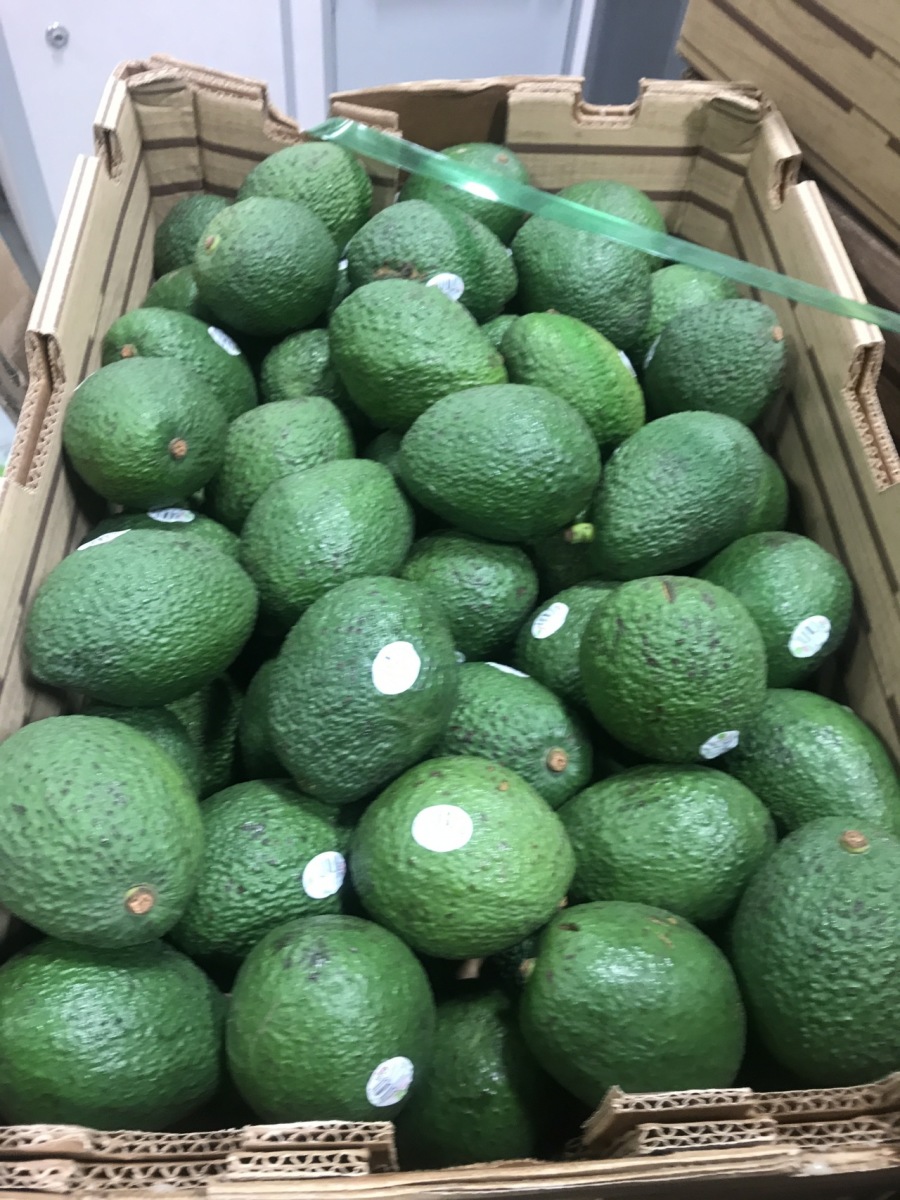Refrigerated Food Warehouse Trends in USA for 2018 by Bill Stankiewicz, Savannah Supply Chain Guy, portfreshlogistics.com

Technavio has published a new report on the refrigerated warehousing market in North America from 2017-2021. With details shared here from Business Wire in this & the second paragraph. In 2016 the value of meat, fish, & seafood was at $42.65 billion in sales & in year 2021 is expected to grow to $79.93 billion. The refrigerated warehousing market in North America is expected to grow at more than 13% during the forecast period. The market is segmented by application, which consists of meat, fish, and seafood; dairy and frozen desserts; fruits, vegetables, and beverages; bakery and confectionery; and pharmaceutical products. The refrigerated warehousing market in North America is growing because of the rising e-commerce industry for frozen food. In the US, 16% to 29% share of household expenditure came from meat, fish, and seafood products in 2016 as a result of which more than 60% of the online retailers offer frozen food which necessitates refrigerated warehouses. Thus, with a growing online purchase for frozen food, the demand for refrigerated warehouses is increasing, which is helping the refrigerated warehousing market in North America grow.
A Refrigerated Warehouse is an important segment of the supply chain that involves the storage of temperature-sensitive goods. Refrigerated storage helps in storage of perishable goods during cold chain supply. On the Basis of temperature ranges maintained, refrigerated warehouses can be segmented into two categories: Cold storage (coolers) and frozen storage (freezers). Cold storage areas usually maintain temperatures between 0–10 °C (32–50°F), while frozen storage areas maintain temperatures lower than 0°C (32°F). The market has witnessed an evolutionary change over the last few years. It has shifted from mere storage of food products in cold storage warehouses and their refrigerated transportation to the provision of value-added services to customers. Some of these value-added services include disaster recovery services, specialized services for specific customers, and web interfaces that improve the customer interface with suppliers as it enables them to track shipments throughout the supply chain.
The Refrigerated Storage industry exhibits a low level of market share concentration, with the industry's four largest players generating an estimated 36.4% of total industry revenue in 2017. According to the Agricultural Statistics Board, only 18.9% of all refrigerated storage facilities are estimated to have storage capacity totaling more than 5.0 million cubic feet, indicating the small size of most industry establishments. Additionally, most of these warehouses are owned by small- to medium-sized companies that operate on a regional level. Industry concentration has remained stable over the past five years as the consistent entry of new players into the market has been offset by acquisitions and consolidation on the part of the industry's leading companies.
Each day, millions of cases of product are delivered to restaurants, hospitals, universities and other food-away-from-home destinations. Moving these food products safely and efficiently from farm to fork requires an elaborate, highly coordinated series of links in a long chain of trading partners. Distributors serve as the intermediary between manufacturers and food service operators, procuring palletized and bulk inventory items from manufacturers, then breaking them down to case and unit quantities for food service operators. While distribution may be the least talked about link in the food safety chain, the safety and quality measures taken by successful distribution centers are just as important as the Hazard Analysis and Critical Control Point (HACCP) plan at the supplier’s facility or the careful handling and preparation by the operator. The U.S. distribution chain includes more than 15K to 20,000 companies operating thousands of warehouses and fleets of trucks. A typical broad-line food service distributor may serve anywhere from 1,000 to 6,000 accounts from a single distribution center, and offer customers more than 10,000 food and non-food items. Other types include specialty distributors that focus on specific product categories or customer segments; distribution systems that serve large restaurant chains; and other businesses such as terminal markets and warehouse clubs.

Seventy-five percent of consumers say the produce department is the most important, followed by fresh meat, poultry, and seafood (60%); store brand products (36%); local farm foods/produce (35%); and the in-store bakery (29%), according to a Packaged Facts survey. In the USA over the past 30+ years imported fresh produce was brought into the Port of Philadelphia & Wilmington area ports. Part of the reason was due to the colder climates up North & fumigation is still done there on many required imported items such as Kiwis. So product was then shipped down to the southeast via refrigerated truck after being unloaded from a container that was then trans-loaded from a DC in Pennsylvania. Tremendous amount of cost & re-handling. Now those same products come direct to the Port of Savannah, saving money for retailers & improving cycle times.
The Port of Philadelphia sometimes collectively refers to all the public and private ports and marine terminals located along the Pennsylvania port. Most often, however, the term applies to the publicly-owned marine terminals located within Philadelphia city limits along the Philadelphia side of the Delaware River. These terminals are managed by the Philadelphia Regional Port Authority, an agency of the Commonwealth of Pennsylvania and New Jersey sides of the Delaware River in the Philadelphia region.


Supermarkets experienced major consolidation and structural change through mergers, acquisitions, divestitures, and internal growth in the mid-to-late 1990s. These factors produced increasing shares of the largest 4, 8, and 20 grocery retailers during this period. This vigorous consolidation activity slowed throughout the following decade and has risen during the last couple of years. Supermarket mergers and acquisitions were slightly higher in 2013 than in 2012, and the 2013 mergers and acquisitions were at their highest level since 2007. Some highlights for 2013 include the following:
- The top four grocery retailers in 2013 were Wal-Mart Stores, Inc., Kroger, Safeway, and Publix Super Markets.
- In 2013, the share of grocery sales by the top 4 and top 20 grocery retailers rose for the first time since the recession of 2007-2009, and held steady for the top 8 grocers.
- Kroger, the largest traditional supermarket chain, acquired Harris Teeter, a retailer with 212 stores operating in eight states. However, these stores will continue to operate under the Harris Teeter name.
- Following divestiture by Supervalu, Albertson’s returns to the top rankings and is currently the sixth largest grocery retailer. Albertson’s agreed to acquire Safeway in the first quarter of 2014, and the sale was confirmed by shareholders in July, 2014. The combined companies would have held third place in these rankings—roughly midway between Kroger and Publix by sales volume—had they operated as a single company in 2013.
- Target is now included in these rankings and was the 16th-largest grocer in 2013. Adjusted sales from Target and Wal-Mart Stores, Inc. are added to grocery sales from the Census Bureau because these stores are not classified as supermarkets by the North American Industry Classification System (NAICS).
- Amazon-Whole Foods purchase in 2017 has been another shake up in the industry with competitors stock prices dropping with the announcement that same day. The new food retailers are stealing customers with a different approach and understanding of shoppers. Aldi, Lidl and Amazon GO are the future as high quality, low prices and convenience set the stage for food retailing.

see this link: https://youtu.be/RSKy273cMhc
New Trends In Refrigeration:
In the past, companies used the R22 refrigerant system and Central Ammonia Systems for improving efficiency. However, as Occupational Safety and Health Administration (OSHA) considers ammonia a hazardous material, vendors have to make additional investments in their facilities to comply with additional regulations to continue using ammonia and other hazardous materials. The new trend in the industry is the use of CO2 Cascade Systems, where two refrigerants are used in one refrigeration system, and one refrigerant cools the other refrigerant. Such new facility startups have included Portfresh Logistics & their state of the art CO@ Cascade System in Effingham County Georgia.
Frozen food storage warehouses are designed to handle perishable foods and other foods that require freezing for any reason. These warehouses must maintain a constant freezing temperature to ensure the food remains frozen with good business controls. A refrigerated warehouse provides cold storage for foods and other products that need to be kept under a certain temperature & monitored 24 x7. These warehouses must guarantee the storage area temperature does not freeze the food, or allow it to get too warm. One of the most important factors, regardless of the type of facility, is the cleanliness, and housekeeping is tied to safety. It is imperative for food storage that the facility is clean and well maintained so it does not grow bacteria, fungus or create any other health hazardous situations.
Another key consideration is the condition and age of the building. Food grade warehouses should have very strict regulations to protect & store your product. The more well maintained the building is, the less likely there will be pests or rodents to contaminate the food. The building should not have holes, cracks or other ways for unwanted critters to enter. The property around the building should be well maintained to keep pests out of the building. Although proper building maintenance measures are taken to reduce the ability of pests and rodents entering the facility, a pest control plan is a must for food grade warehousing. The facility should have ongoing and proactive pest control inside the building, as well as outside. Traps, chemicals and even personnel should be used to keep pests and rodents out of the facility. For free advice here on good business practices contact Bill Stankiewicz @ 1.404.750.3200 or email: bstankiewicz@portfreshlogistics.com
Regards,
Bill Stankiewicz
Portfresh Logistics
www.twitter.com/billstankiewicz
http://digital.vegetablegrowersnews.com/i/851992-august-2017/22
https://www.youtube.com/watch?v=OFzPOsFfvh0
Tag Lines, Keywords: Cold Chain Market by Type (Refrigerated storage, Transport), Temperature Type (Chilled, Frozen), Technology (Air blown, Eutectic), Application (Fruits & Vegetables, Bakery & Confectionery, Dairy, Meat, Fish & Seafood), and Region
"""""Articles from Bill Stankiewicz
View blog
OSHA's On-Site Consultation Program offers no-cost and confidential occupational safety and health s ...

Dear Bees, I am happy that I have joined : · HighChloeCloud Georgia (United States) · WE ARE · Shapi ...

This past week marked the 49th anniversary of the Occupational Safety and Health Act (OSHA), which s ...
You may be interested in these jobs
-
Device Engineer
Found in: Lensa US 4 C2 - 2 days ago
The Fountain Group South San Francisco, United StatesThe Fountain Group is currently seeking a Device Engineer for a prominent client of ours. This position is located in South San Francisco, CA. Details for the position are as follows: · Pay Range: $55-64/hr · Contract: 1 year with possible extension or conversion · 100% onsite ...
-
Critical Care Veterinarian
Found in: Appcast Linkedin GBL C2 - 1 day ago
Madison Veterinary Specialists Madison, United StatesCompany Description · Madison Veterinary Specialists (MVS) is a group of veterinary caregivers providing multi-specialty and 24/7 emergency care in Madison, WI. Our mission is to deliver high-quality specialized and emergency care in a compassionate setting. MVS is an independent ...
-
Manager, Specialized Tax Services Partnerships
Found in: Talent US C2 - 5 days ago
BDO Austin, United States Full timeJob Summary: · BDO's Core Purpose is Helping People Thrive Every Day. Our Core Values reflect how we manage our work, our relationships and ourselves. As an employee of the firm, you will live true to our Core Values of people first, being exceptional every day in every way, embr ...



Comments
Bill Stankiewicz
6 years ago #1